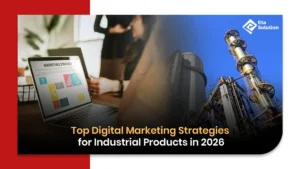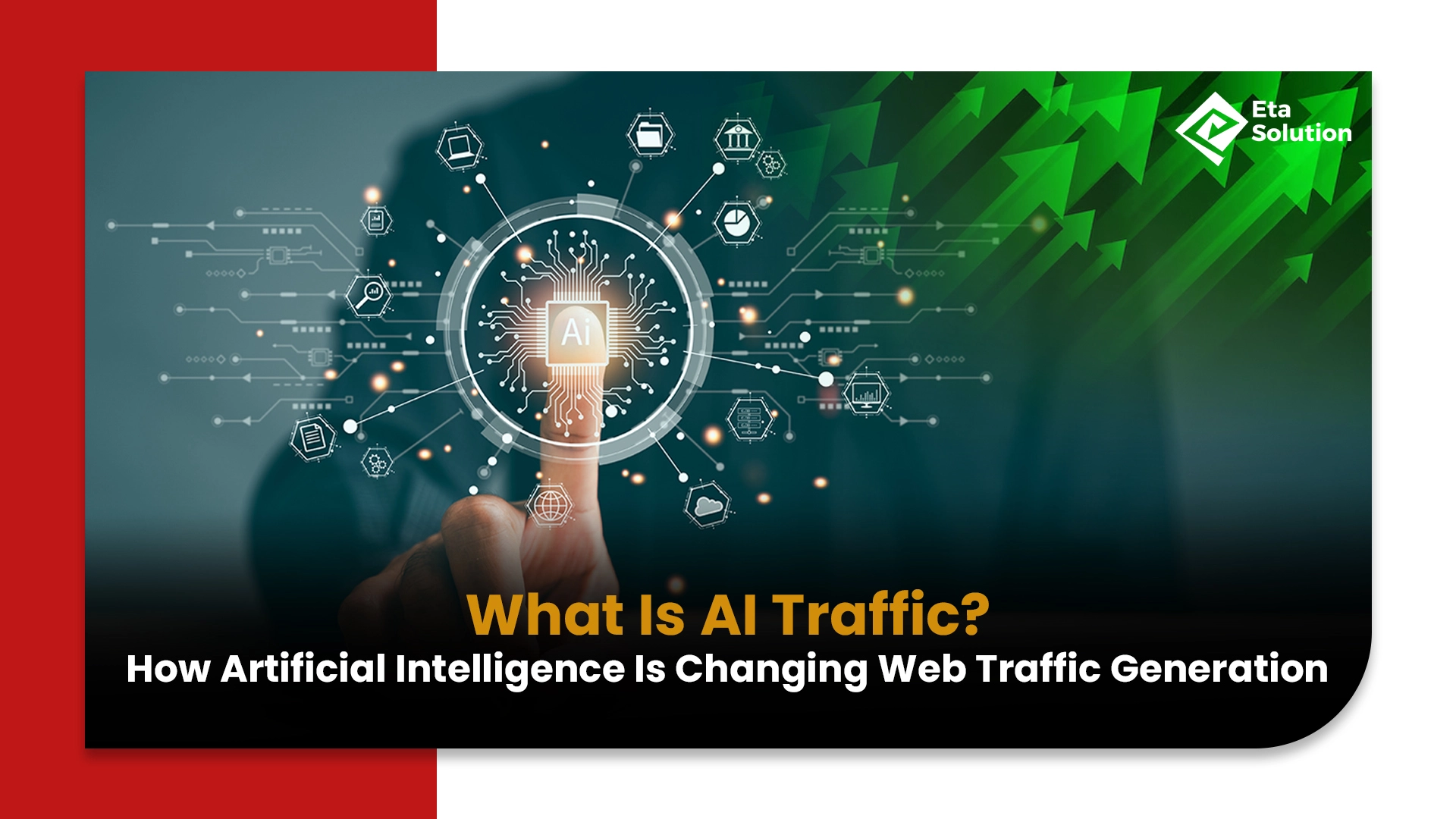
What Is AI Traffic? How AI Is Transforming Web Traffic Generation
Ever wondered why, after just one Google Search like “iPhone 17 Pro Max Price in Ahmedabad,” your Instagram, Facebook, and even YouTube start showing ads for “iPhone”? That’s exactly what AI traffic does to generate web traffic.
What Is AI Traffic?
AI traffic means web visitors brought to your website through the efforts of one or more AI-powered traffic-generating programs. AI traffic includes a mix of real human visitors and non‑human bot activity, such as the AI crawlers that index, analyze, or test UX. In each case, AI doesn’t just drive traffic; it curates who arrives based on intent, behavior, or relevance.
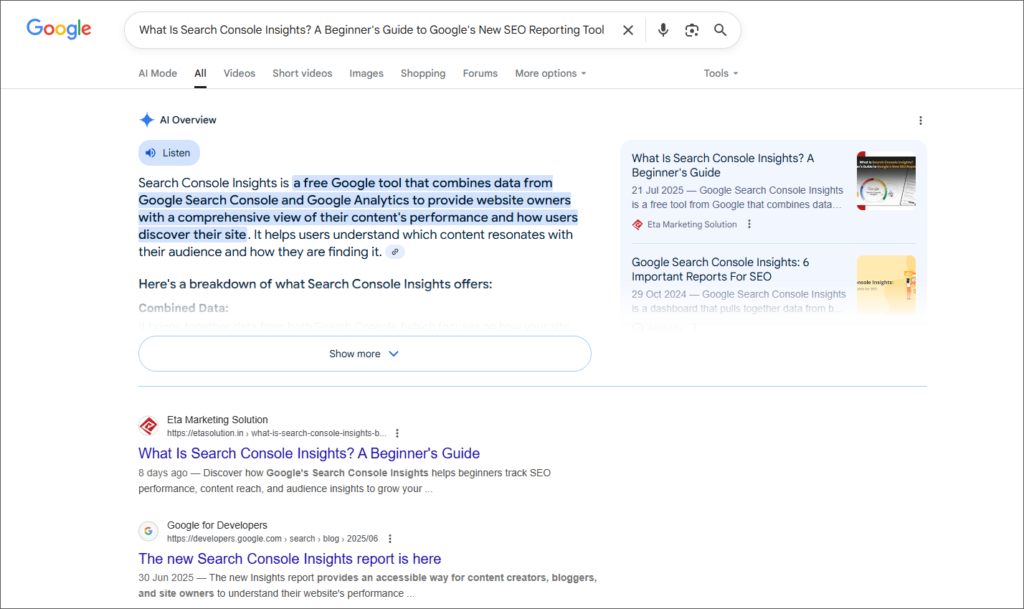
various generative AI platforms are beginning to have a measurable impact on web traffic
- OpenAI (ChatGPT) remains the primary traffic driver.
- Perplexity, Claude (Anthropic), and Huggingface are having a slow yet effective impact.
- New entrants like Grok, DeepSeek, and Meta’s AI are also contributing to web traffic.
- Microsoft’s AI (using Copilot/Bing) shows a stable influence via its integration in search and productivity apps.
Ideation behind using AI traffic
It is about the intelligence behind AI web traffic instead of a crowd. Let’s break it down:
- Behavioral Cues
AI collects data points that monitor a user, such as what they searched for, what they clicked, how long they looked at a page, and even the movements of their cursor. AI makes use of these micro-interactions and determines what items could be relevant to an individual user next time before they click on that search button.
- Audience Real-time Psychographic Segmentation
Rather than targeting demographics, AI segments audiences based on real-time psychographics, or clusters of interests, motivations, emotional triggers, device usage, purchase cycles across the life span, and even personality characteristics.
- Predictive Targeting
From AI’s previous knowledge base -hub, it predicts who is likely to convert, shows ads or content to their audience, even sometimes before they realize they want something.
- Dynamic Content Delivery
Content (ads, landing pages, product suggestions) is dynamically changed and recommended to each user based on each user’s distinct behavioral elements, technology enables AI via recommendation engines and natural language processing(NLP).
- Performance Optimization
AI software constantly tests and adjusts ad content, ad types, time slots, ad channels, etc, to better understand where AI optimization can deliver the greatest ROI quicker and more refined than a team could do.
Let’s understand what smart traffic tools are used to generate AI traffic.
AI-Powered Tools for Traffic Generation
Below are the AI traffic generation tools that other marketers and agencies are using
Chatbots: Live Communication That Leads to Conversions
AI chatbots do more than answer questions; they create journeys for users. When AI website visitors land, AI chatbots allow Website visitors to take action right away, rather than browse mindlessly and bounce away due to confusion. The chatbot immediately engages them with a personalized welcome, engaging questions, and helps them:
- Find the right blog post
- Get to the product page they are searching for
- Access a custom offer or lead magnet
By eliminating friction and confusion, chatbots allow users to continue engaging with the content longer and increase conversion rates directly related to increased high-quality traffic retention.
Predictive Analytics: Traffic That Plans Ahead
Predictive analytics tools use machine learning to analyze past and current user behavior. For example, when you search “Best Digital Marketing Agency in Ahmedabad” on Google, it shows exactly what you are looking for, and what content will lead you to take action.
For marketers, this is helpful in:
- Launching campaigns at the highest times for engagement
- Targeting users when they are most likely to engage
- Identifying where to spend cash for the highest ROI’s
- AI Content Distribution Platforms: Smarter Distribution, Better Timing
Producing great content is only half the struggle. Getting it in front of the right eyeballs, at the right time, is where AI content distribution platforms can help.
These platforms use algorithms to:
- Choose the best-performing platforms for your niche (LinkedIn, Instagram, Reddit, Quora, etc.)
- Identify the best times to publish, based on your target audience
- Schedule and promote content to multiple channels automatically
- Review performances so that distributions can re-adjust
With this approach, you’ll have better visibility, wider distribution, and more engagement.
Now let’s understand how AI works with user behaviour & Intent.
How AI Analyzes User Behavior and Intent
AI can understand you more than a person can. Basically, AI has completely changed the way digital platforms interpret and respond both with and to users. AI is not only generating traffic but is also generating and delivering content more intelligently.
Understanding the “Why” Behind Every Click
New AI systems watch your search queries, scroll behaviors, clicks, time on pages, and even preferred devices. This data helps AI predict what a user is looking for.
Google’s AI Mode
With the release of Google AI Mode on June 24, 2025, the search landscape took a massive leap forward. AI Mode understands conversational intent and provides answers in the search interface.

For Example: When you search for “Best Phone under 50K for gaming”
In the case of the above search, Google’s AI Mode will show Apple, as well as Samsung, with links to the products on their site, along with features that support gaming.
The Growing Presence of Predictive SEO Models
As a result, marketers are evolving. By analyzing intent-based data, AI can build predictive SEO Traffic models, intelligent systems that allow Artificial Intelligence Marketing to recognize:
- What content will a user need next
- When will they want to look for it
- What format is most likely to engage them (article, video, infographic, etc)
With these insights, you can deliver the right content, at the right time, to the right user. It’s not just about ranking high in search anymore; it’s about becoming relevant in the moment.
Did you know AI can even contribute to the functioning of Social Media Platforms? Let’s explore this in more detail.
Role of AI in Social Media Traffic Growth
AI has significantly altered the way content is created, curated, and consumed on social media. From tailored feeds to ideal post timing.
Smart Content Delivery: Have You Ever Wondered Why You See What You See
Have you ever wondered how Instagram knows what Reels you want to see? “Blend” Reels reveal the same content to you and a friend, based on the similarities/patterns in your combined viewing habits and timing. That is AI doing its thing, real-time analysis of user behavior.
Platforms like Instagram, Facebook, and TikTok all leverage AI solutions to:
- Learn what posts and videos you like, comment on, or scroll past
- Then rank that content in your feed
- Then also recommend creators, trends, or ads based on this activity
AI is everywhere, even in SEO Copywriting. Let’s understand how
AI in SEO: Content Optimization and Keyword Targeting
AI in SEO copywriting enables it to be faster, more intelligent, and much more impactful than ever before. AI can collect user intent data, provide content forecasts, and arrange content.
Intelligent Keyword Targeting via AI
AI has changed the Keyword Research game. AI-powered tools consider search intent, user context, and content gaps in addition to keyword volume and difficulty scores.
Capgemini’s report indicates that 56% of marketers are using AI in SEO tasks like:
- Keyword clustering and intent mapping
- Generating Meta Tags and Meta Descriptions
- Title tag optimization based on SERP analysis
In this way, you can create content that not only uses keywords but also reflects what the user is searching for.
Now let’s see how AI plays a role in Paid Advertising.
AI in Paid Advertising: Smarter Bidding and Targeting
Digital advertising has experienced a drastic shift in recent years, and AI is at the forefront of this change. Whether you’re running campaigns on Google Ad, Meta (Facebook and Instagram), or LinkedIn, AI is not just the next buzzword; it’s the secret weapon that is smartly bidding and targeting, and making more sales.
The Growth of Smart Bidding and Intelligent Targeting
Marketers often manually bid on target audiences and run A/B tests, but AI can handle this more efficiently.
For instance, you can now use Smart Bidding from Google Ads or Advantage+ campaigns from Meta, which use machine learning SEO to make adjustments in real time across various variables, on many factors, including:
- The user’s search history
- What device are they on, and what country are they in
- When the user is running the query (time of day)
- The likelihood that a user is going to convert
These systems keep learning both in real-time and from historical data to make micro-adjustments that would be incredibly difficult, if not impossible, for a human marketer to perform at scale, especially in real-time.
AI-Driven Creative Testing and Personalization
Beyond just targeting and bidding, AI is also changing how creatives are tested and delivered. On Meta, for instance, Dynamic Creative Optimization (DCO) allows you to upload multiple headlines, images, and CTAs, and the algorithm automatically combines and delivers the highest-performing variations to each user.
Personalization is now baked into the ad delivery process:
- Different users see different ad versions based on their behavior, interests, or past interactions.
- The system learns over time which combinations work best for different segments.
This leads to better engagement rates, stronger relevance scores, and more efficient use of creative resources.
Let us talk about how to generate customized content using AI
Personalization and Dynamic Content with AI
Delivering personalized and dynamic content is one of AI’s most potent uses in traffic generation. Businesses can now design highly customized interactions in real time according to a user’s behavior, preferences, and previous actions, thanks to AI.
Real Time Customization at Every Touch
AI immediately examines a visitor’s behavior when they arrive on your website, including their device, clicks, previous visits, and where they came from. With this information, AI can:
- Customize landing pages with user-interest-based headlines, images, and CTAs.
- Use behavioral cues and previous interactions to dynamically update the Email content for every recipient.
- Make recommendations for goods or information that the user is most likely to find interesting.
Worried about the Pros & Cons of using AI for traffic generation? Let me explain to you in detail.
Pros and Challenges of Using AI for Traffic Generation
Traffic generation is way more than just SEO or Paid Ads; it is about strategically knowing what you are doing, including AI.
AI tools are being used to interpret user behavior patterns, anticipate trends, and optimize activities in real time. But like all powerful tools, AI comes with Pros and Cons. Here’s a better look at both.
Pros of AI for Traffic Generation
- Timely Decision-Making
AI makes campaigns instantly adjustable to current behavior or trends, or timing, so you can achieve optimal performance quickly.
- Hyper-Targeted Campaigns
AI helps you reach the right audience segment with laser-focused targeting based on affinity, behaviors, and demographics.
- Personalized Experiences
AI makes content dynamic, creates smart recommendations, and personalized messaging that keeps users engaged with your brand.
- Optimized Resources
AI automates repetitive tasks and optimizes spending on ads, allowing you to spend more time on strategic decisions.
2. Cons of AI for Traffic Generation
- Requires High-Quality Data
Using bad or little data will result in targeting errors and defective outcomes.
- Risk of Over-automation
Continued AI use can create a robotic feeling to your content leads.
- Setup Changes are Complicated
Setting up and analyzing new tools can become complicated and time-consuming.
What are the future trends leading to AI traffic?
Future Trends: Where AI Traffic Is Headed
AI traffic is not just about automation; it will ultimately be about intelligent adaptive systems that prove they understand user behaviors in real-time. What can we expect to be the four takeaways over the next few years?
- Personalized Journeys
AI is already able to personalize content based on a user’s location, search history, and time of day, and with the results, it is getting better engagement and conversion rates through hyper-relevant experiences.
- Search by Voice
Search behavior with voice assistants, natural and human speech, is becoming a real experience, and the search will also be localized in nature. Marketers must optimize for long-tail, natural phrases, especially those conducting local searches.
- Visual AI Content
Programs like Google’s Lens are changing the way users find products, and AI-generated images and videos are increasing traffic for verticals such as retail, lifestyle, and real estate.
- Self-Running Campaigns
New multi-platform AI advertising campaigns, such as Performance MAX in Google Ads and Advantage+ in Meta, are introducing solutions that will test and optimize creative & scale on their own, allowing marketers to transition their roles from managers to strategists.
Final Thoughts and Best Practices
To be honest, chasing numbers alone won’t work as the main strategy for digital traffic. Your message needs to reach the right people at the right time, and there AI is pulling its game.
AI helps you generate traffic way more quickly, smarter, and with efficiency by delivering customized content and enabling ad targeting. Best Digital Marketing Agency in Ahmedabad uses AI very smartly to make your brand visible and hit the target.
AI isn’t flawless; it requires high‑quality data and skilled experts to work effectively. Now the question is, where to find experts?
The team at Eta Marketing Solutions is here to help.
AI traffic refers to website visitors that are attracted or generated using artificial intelligence tools and algorithms. These tools help analyze data, understand user behavior, and automate strategies to bring the right people to your site more effectively than traditional methods.
AI can support and improve SEO work, but it can’t fully replace human experts. While AI handles data analysis and automates repetitive tasks, human insight is still needed for strategy, creativity, and understanding user intent deeply.
Yes, when used properly, AI-generated traffic is safe and reliable. It focuses on attracting real users through smart content and ad strategies. However, it’s important to avoid black-hat AI practices like fake bot traffic, which can harm your site.
Absolutely. AI improves paid ads by analyzing user behavior, testing different ad versions (A/B testing), and optimizing bidding strategies automatically, leading to better ad performance and higher returns on ad spend.
The future of AI in web traffic generation is very promising. As AI technology advances, it will continue to make marketing more personalized, predictive, and efficient, helping businesses attract and retain more visitors in smarter ways.

What started as a passion for marketing years ago turned into a purposeful journey of helping businesses communicate in a way that truly connects. I’m Heta Dave, the Founder & CEO of Eta Marketing Solution! With a sharp focus on strategy and human-first marketing, I closely work with brands to help them stand out of the crowd and create something that lasts, not just in visibility, but in impact!
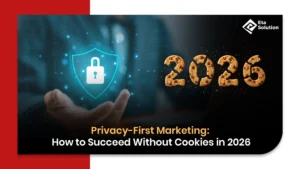
Privacy-First Marketing: How to Succeed Without Cookies in 2026
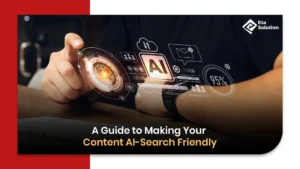
A Guide to Making Your Content AI-Search Friendly

Industrial Product Marketing with LinkedIn & Paid Ads
